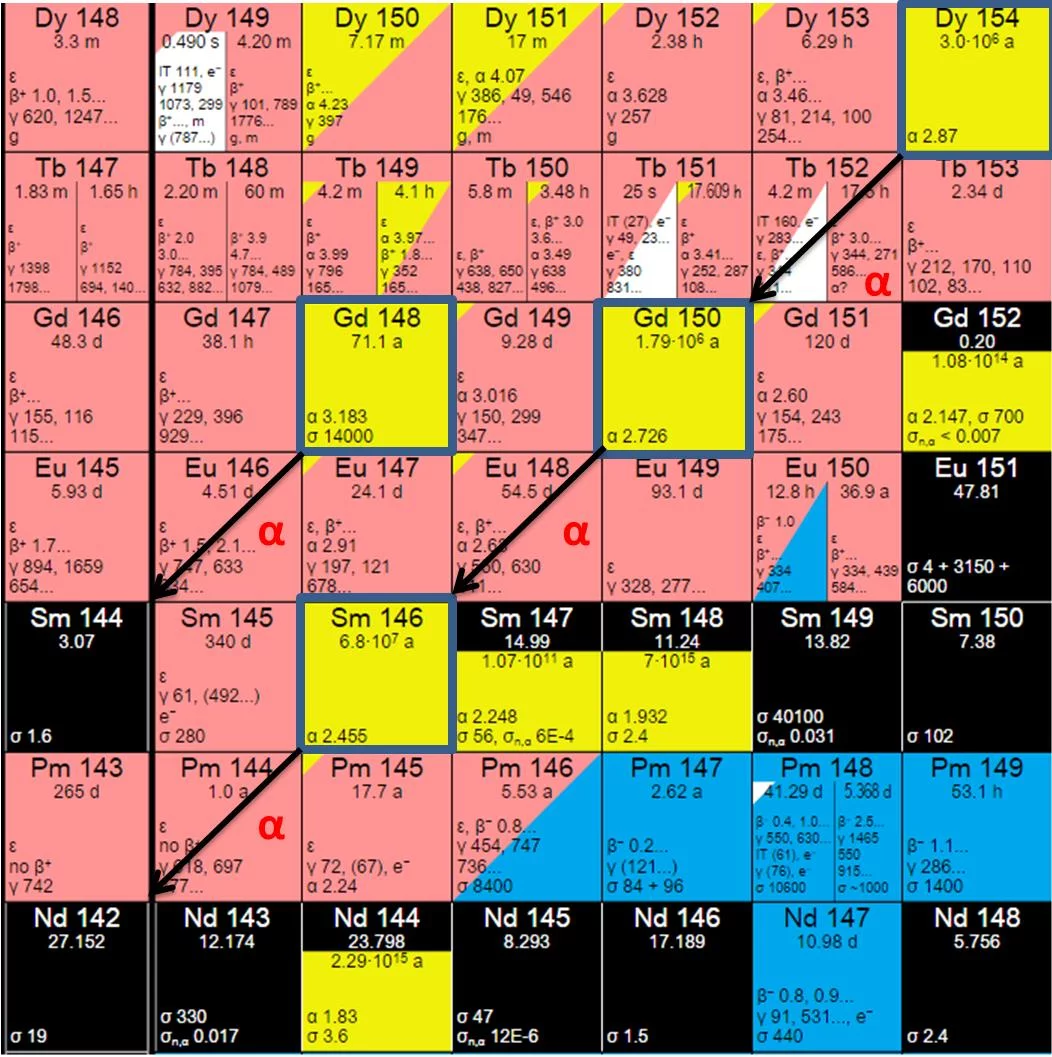Nuclear data are of fundamental importance in different fields such as nuclear technology and nuclear astrophysics. In our group, we are focused on cross section and half-life measurements for different purposes. The following examples are given to present the interests of our research group.
Heavy metals that are considered to be used as spallation target materials for accelerator driven systems (ADS) and spallation neutron sources (SNF) are Ta, W, Hg, Pb and PbBi eutectic (LBE). The radionuclide inventory of these targets provides necessary information for the construction, licensing and disposal of ADS and SNF facilities. In addition, reliable experimental data are important to evaluate and improve computer codes, used for calculating radionuclide inventory buildup for different target-energy combinations. Cross section data on the production of long-lived radionuclides in irradiated targets are especially crucial for the management of the decommissioning and the long-term waste disposal of these facilities. α-emitting rare earth isotopes, which have half-lives ranging from several decades (148Gd T1/2: 74.6 a) to million years (150Gd T1/2: 1.79 × 106 a, 154Dy T1/2: 3 × 106 a, 146Sm T1/2: 1.03 × 108 a), give a significant contribution to the overall radiotoxicity of spallation targets. To perform accurate cross section measurements with low uncertainties, we perform a prior chemical separation of the lanthanides from different irradiated target materials, followed by purification of each single element, which is then deposited as thin film onto a backing to perform precise α- spectrometry measurements.
The region of the lanthanide isotopes offers a fascinating scientific field for nuclear astrophysics. However, there are only a few literature data on the half-lives of these isotopes and with very high uncertainties. Therefore, there is an urgent need to re-measure the half-lives of these radionuclides, which is, so far, hampered by the lack of sufficient sample material. Highly activated components from the surroundings of the PSI high-power accelerator facilities are a unique source for these extremely rare materials. 146Sm is one of the prominent nuclides with respect to the understanding of p-processes in this mass region. The α decay of 146Sm to 142Nd is considered as a suitable Solar-System chronometer for selective information on very early events (>4.2 × 109 a). In order to apply it, it is necessary to know the existence time of 146Sm in the early solar system, and thus, an accurate knowledge of its half-life is mandatory. Recently, we aim to perform high precision half-life measurements of 146Sm with uncertainty lower than 5%, using high-resolution α spectrometry and multi-collector inductively coupled plasma mass spectrometry (MC-ICP-MS). In addition, we have an ongoing project “measurement of neutron capture cross sections and determination of half-live of short-lived cosmogenic radio-nuclides” (MeaNCoRN). For the details see: MeaNCoRN


